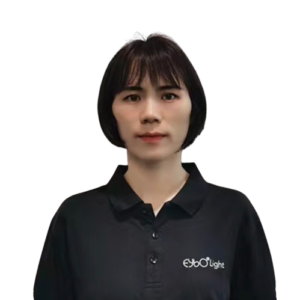With such a design of dining lighting, do you still need to worry about a lack of customers?
Have you ever thought that the fierce competition in physical business today is not only limited by the epidemic, but more due to imitation by everyone, and there are similarities everywhere:
- I do what others do
- Where others sell, I will sell
- I will sell what others do
- The only difference – others sell at a lower price, I am lower than you…
Take today’s catering market with serious homogeneity as an example, food, labor, and pavement costs are well known to cater to restaurants at the same price. How to provide a more comfortable dining environment and atmosphere on this basis? Create a different dining space and get out of the circle smoothly. Attract more customers? Therefore, more and more owners began to pay attention to the effect of lighting on the overall space and the visual and psychological effects on consumers.
What does light mean for dining spaces?
In the dining space, many people think that the most direct function of light is to let everyone “see”. The effect of lighting is far more than that simple. The atmospheric or layered lighting environment in the space makes the lighting a silent third party.
Moreover, the intuitive light contrast makes the positioning of the restaurant clear at a glance, allowing customers to take the initiative to make choices and accept them readily. Here is an intuitive example:
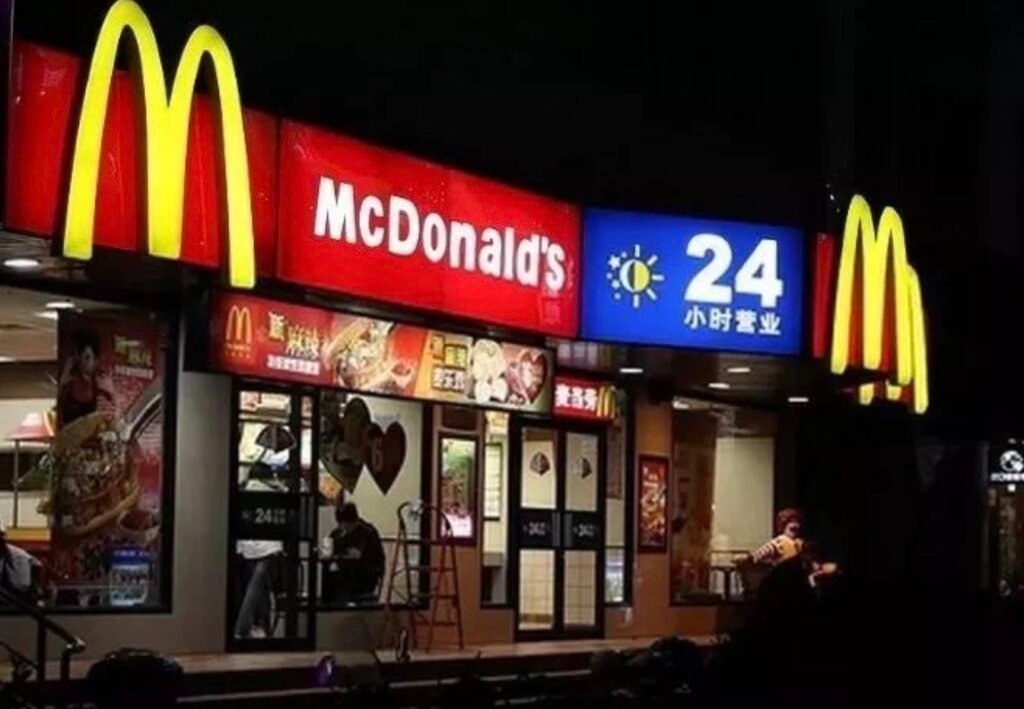
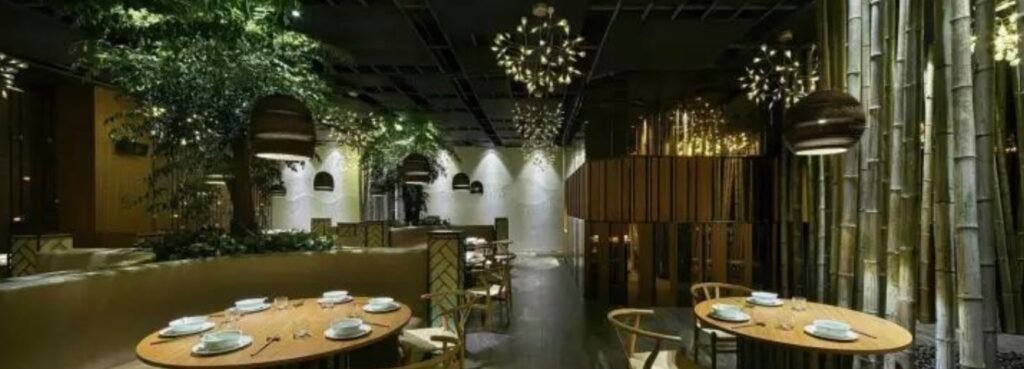
A good decoration style with comfortable lighting makes it easier to become a celebrity check-in point
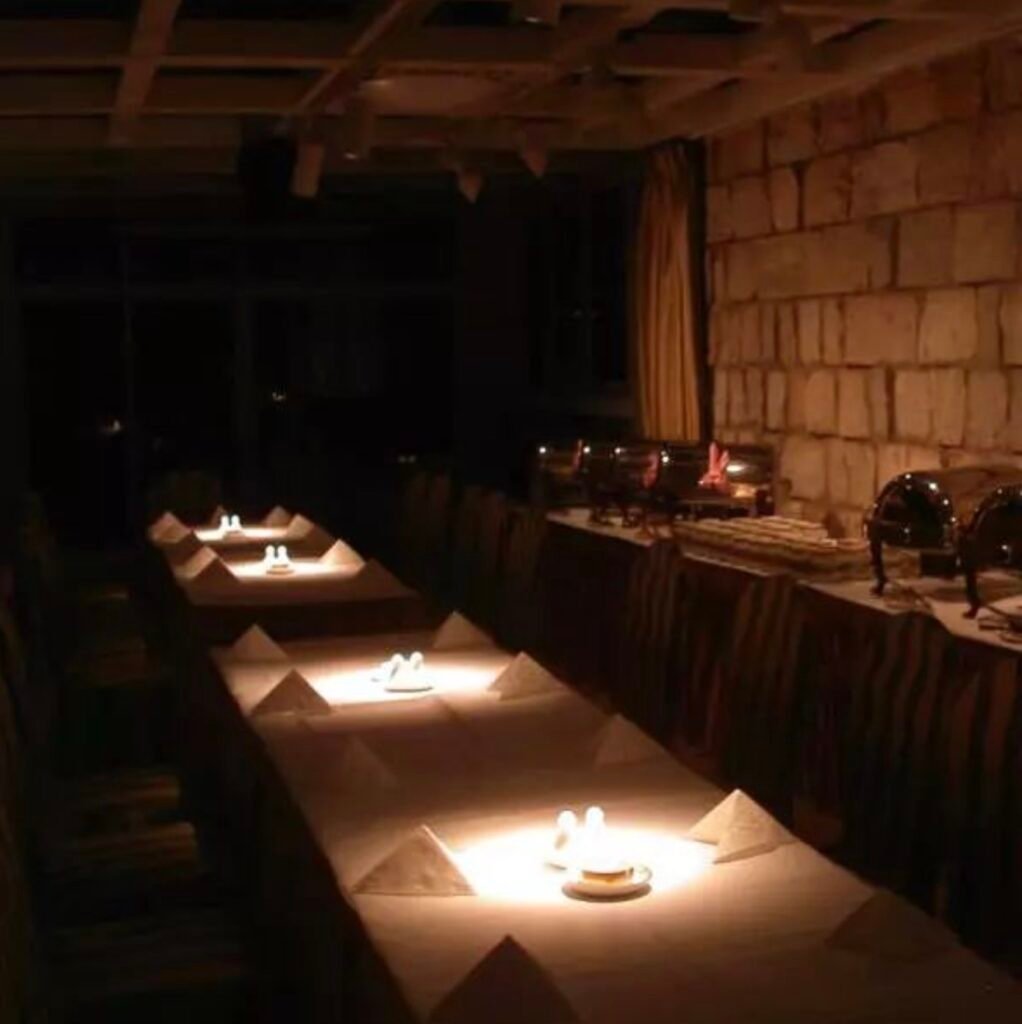
The creation of lighting instantly enhances the atmosphere of dishes and dining
Secondly, the role of light is:
- Emphasize key areas
- The transition between different dining areas
- Cover up and make up for restaurant deficiencies
- Improve the competitiveness of restaurants
A good lighting design can attract customers’ attention to food and stimulate customers’ appetite; of course, owners can also use lighting to help the store gather popularity, create demand, and increase sales. Next, take notes, let’s systematically analyze the lighting design of each area of the dining space!
Lighting design of each area of the catering space
Generally speaking, the restaurant area is divided into store signs, waiting for the area, cashier, open stall, aisle, booth, and private room. We analyze in detail how the lighting design of each area should be done.
Shop Sign
The ultimate purpose of store recruiting is to let consumers see and remember. There are four types of lighting: external lighting mode, self-illumination mode, dynamic lighting mode, and mixed lighting mode.
- External lighting mode:
Advantages: high brightness, eye-catching
Disadvantages: light pollution, high requirements for the quality of lamps and lanterns
- Self-illumination mode:
Advantages: more eye-catching, clear
Disadvantages: relatively low luminous brightness, unstable color temperature
- Dynamic Light Mode:
Advantages: eye-catching, novel
Disadvantages: high cost, unstable quality
- Mixed Lighting Modes:
Advantages: high brightness, eye-catching
Disadvantages: high installation and cost
In general, the four lighting methods have their advantages and disadvantages. It is still necessary to comprehensively consider the cost, store style, installation conditions, and other aspects to make lighting design.
Waiting area
Generally speaking, popular restaurants will set up waiting areas, and the lighting design of the waiting areas directly determines the retention rate of customers.
- Borrowing common area lighting patterns:
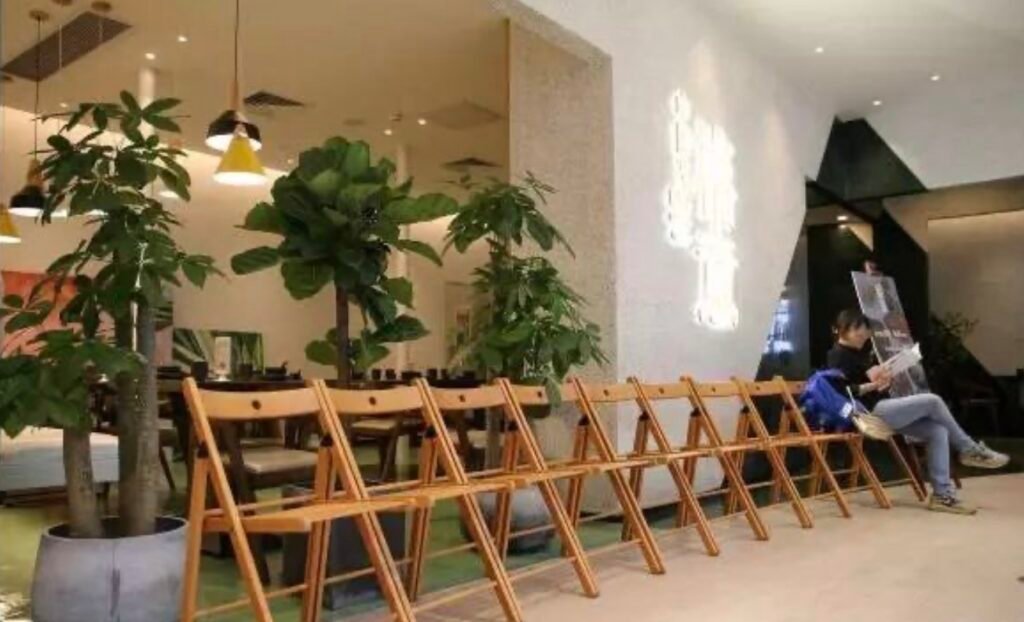
Advantages: high brightness, resource sharing
Disadvantages: Extremely liquid unless loyal customers
- Independent area lighting modes:
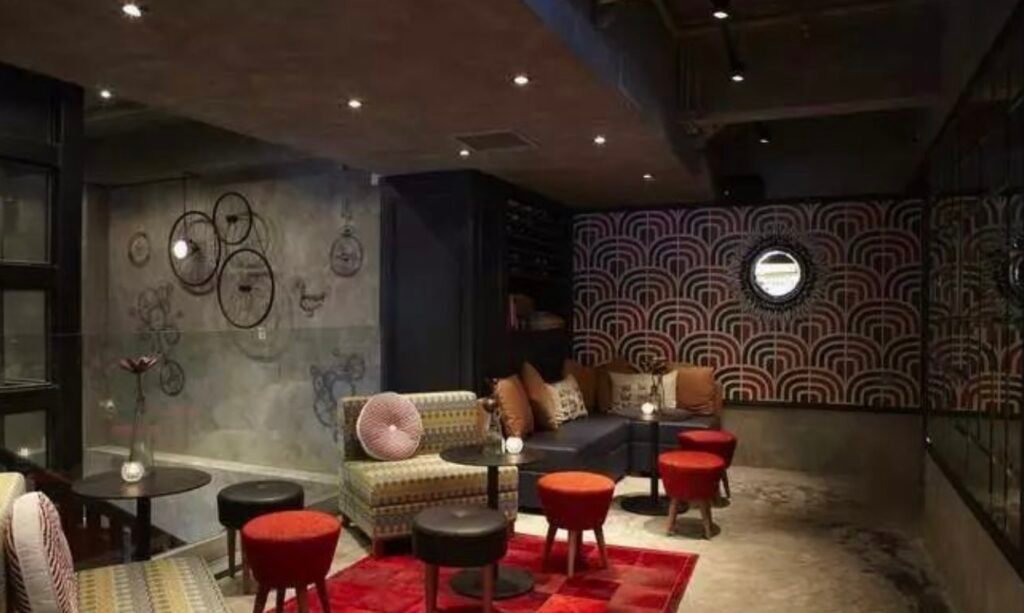
Pros: Comfortable, quiet
Disadvantage: low optionality is a test of customer’s patience
- Entertainment self-service ambient lighting mode:
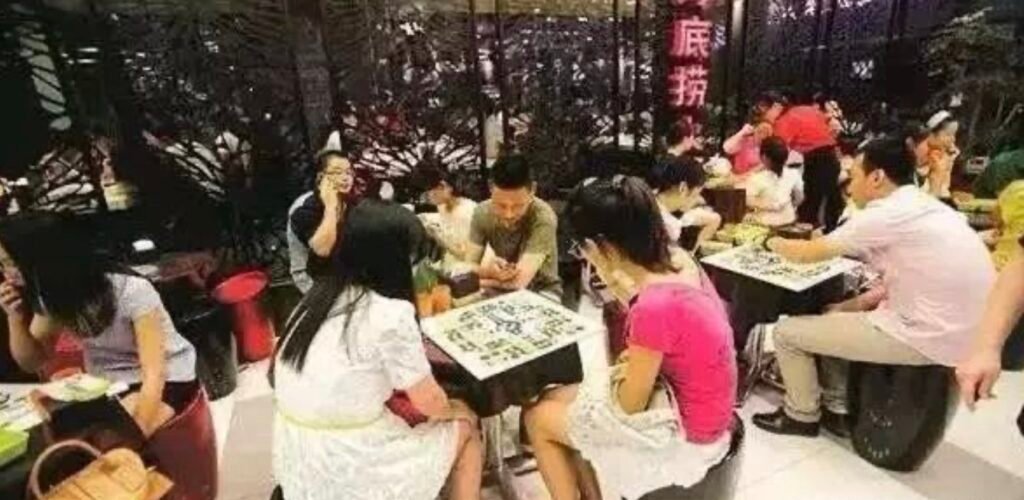
Advantages: high brightness, resource sharing, popular
Disadvantage: high input cost
Regardless of the lighting mode, the principles that must be followed in lighting are: to create an environment and retaining diners.
Checkout counter
- Modeling Light Mode:
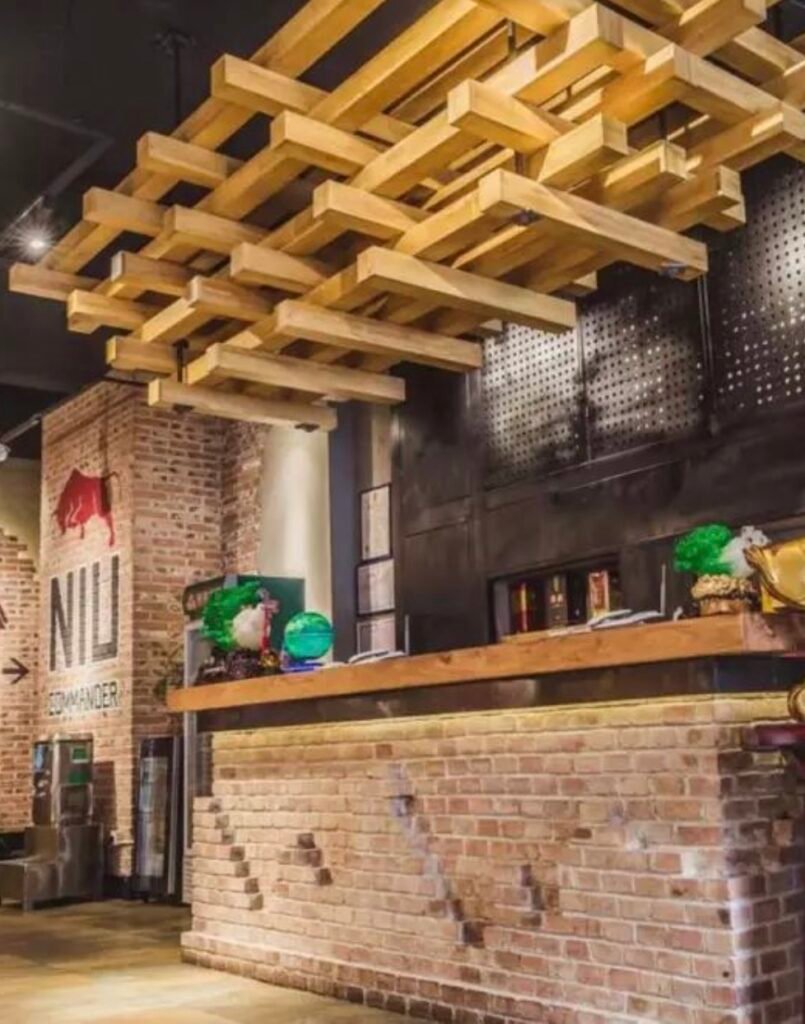
Advantages: high brightness, eye-catching
Disadvantages: the cash register is too commercial
- Integrate lighting mode with the bar
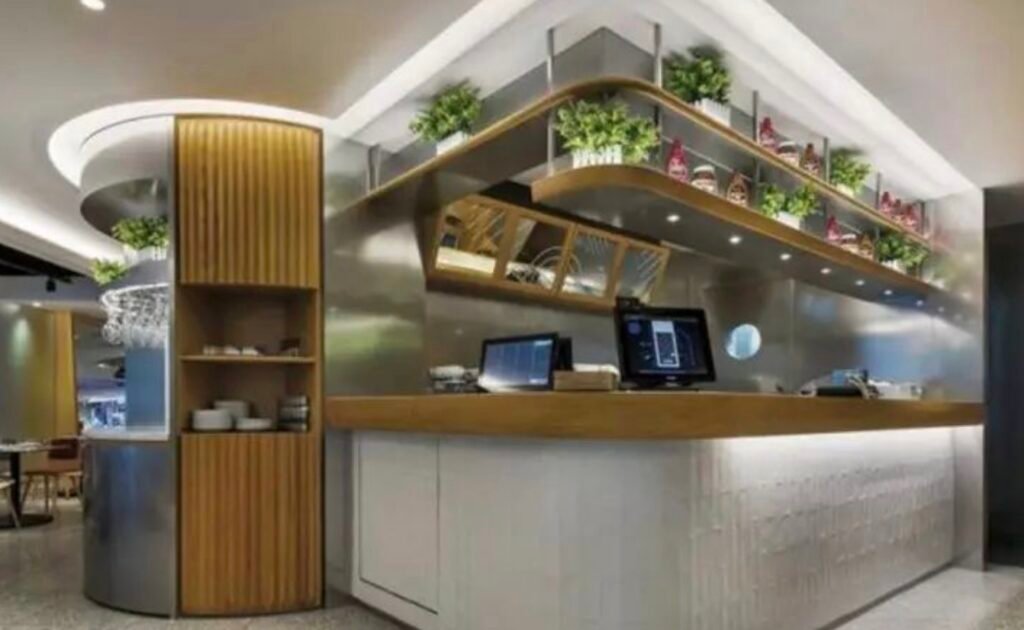
Advantages: high concealment, space-saving
Disadvantages: cash register requires system cooperation
- No bar mode

Advantages: safe, convenient, and fast
Disadvantages: Losing the characteristics of local catering, is also a problem for customers who use cash.
Use a cashless payment model, eliminating the need for a counter design.
Of course, the design of the bar should ultimately revolve around the ultimate purpose of diversifying payment methods, fast and convenient.
Kitchen
It is necessary to popularize science, the kitchen represents an attempt to reform the catering industry. In the past, the kitchen of the hotel was set up in the background, and the guests could not see the kitchen (or the operation room) when they came to the restaurant to eat. Now, some restaurants directly move the kitchen to the dining area, so that customers can see the birth process of the dishes. In lighting design, you can do this:
- Buffet area lighting mode:

Advantages: high brightness, good color rendering
Disadvantages: high requirements for the level of hygiene management of businesses
- Independent area lighting modes:
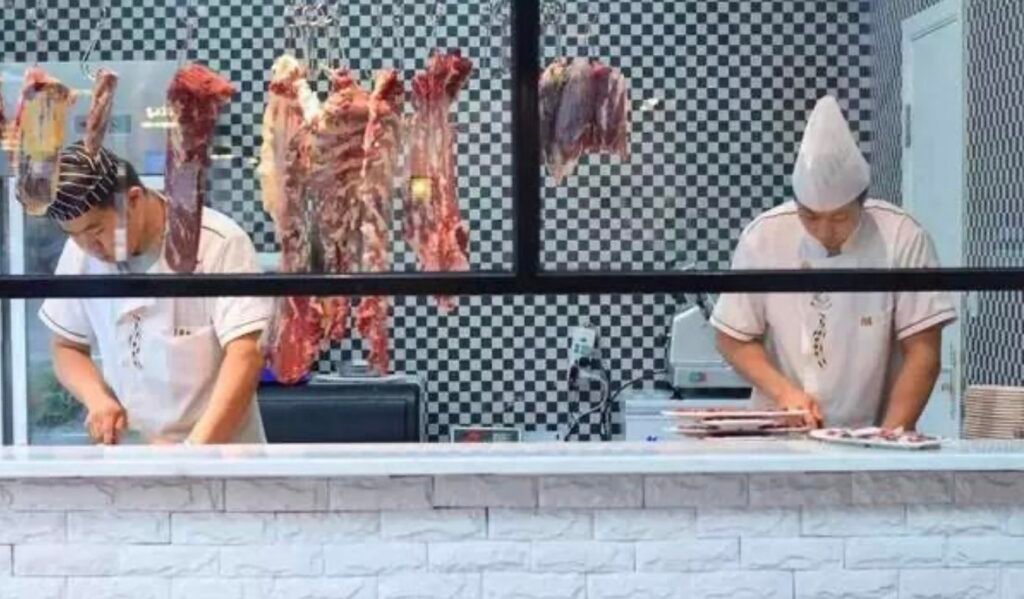
Advantages: clean, hygienic
Disadvantages: the role of the image is far greater than the actual meaning
- Situational ambient lighting modes:
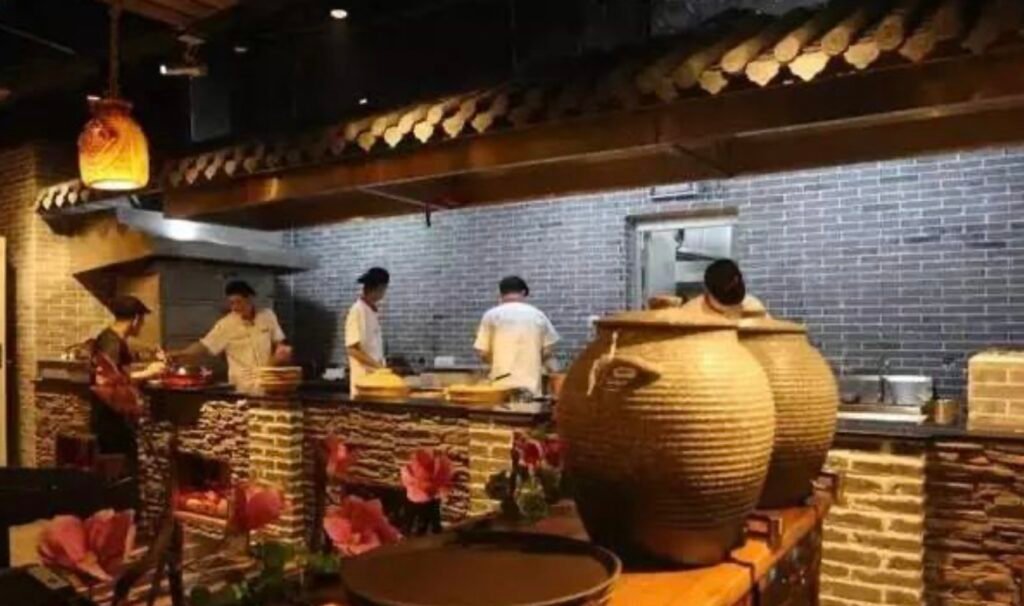
Advantages: high brightness, strong interactivity
Disadvantage: high input cost
There is no optimal lighting design solution. The stalls’ lighting design should be according to different dining styles. The ultimate goal is only one: to convince the diners that his choice is correct.
Dining table
As the core area for diners to eat, the lighting design of the dining table can be described as the top priority.
- Buffet area lighting mode:
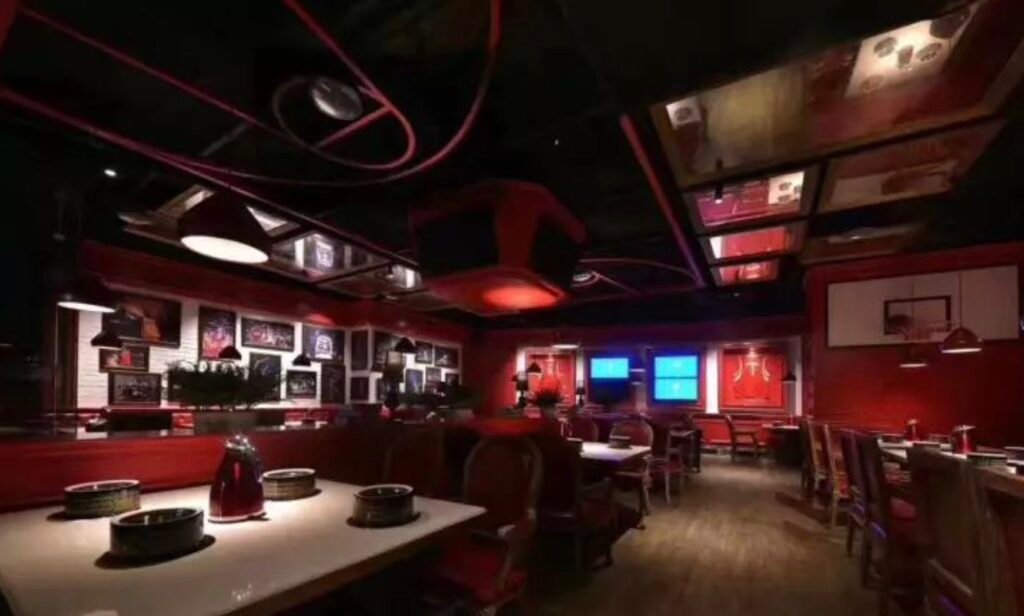
- Deck area lighting mode:
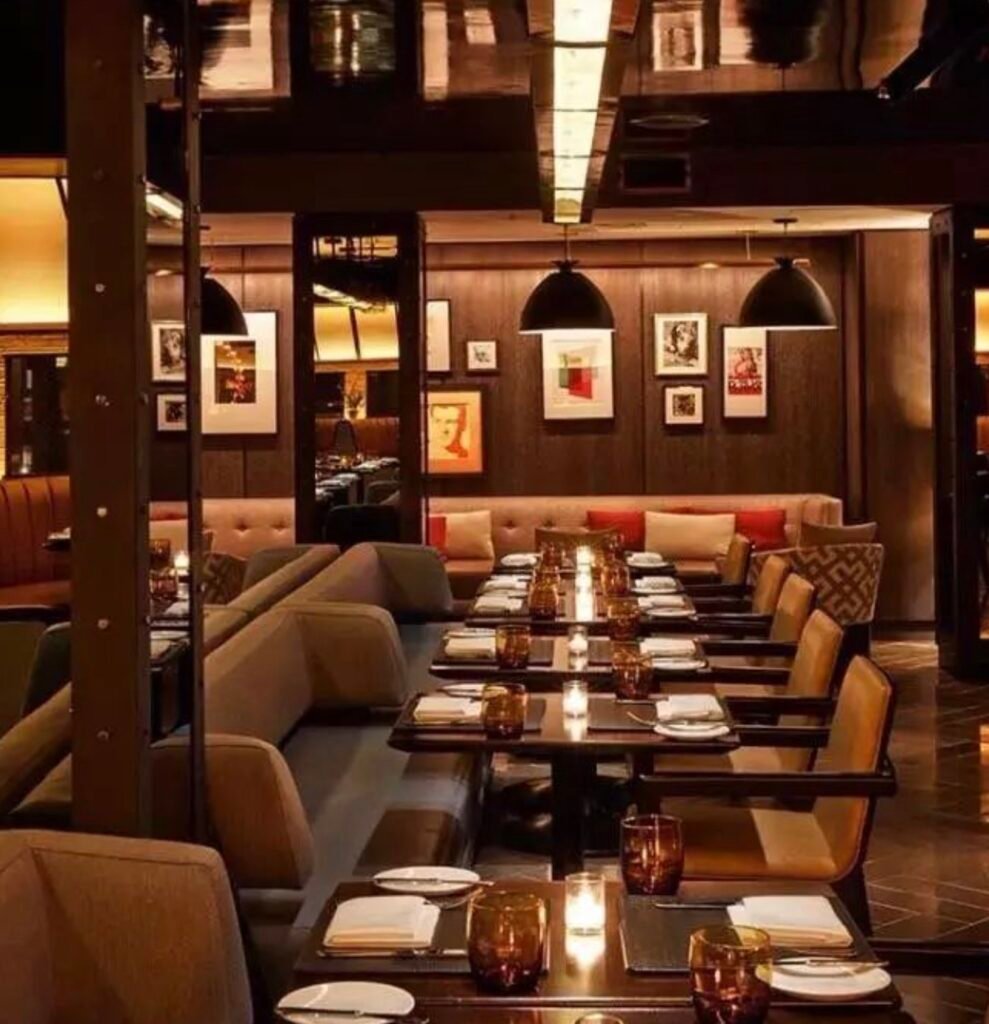
- Situational ambient lighting modes:
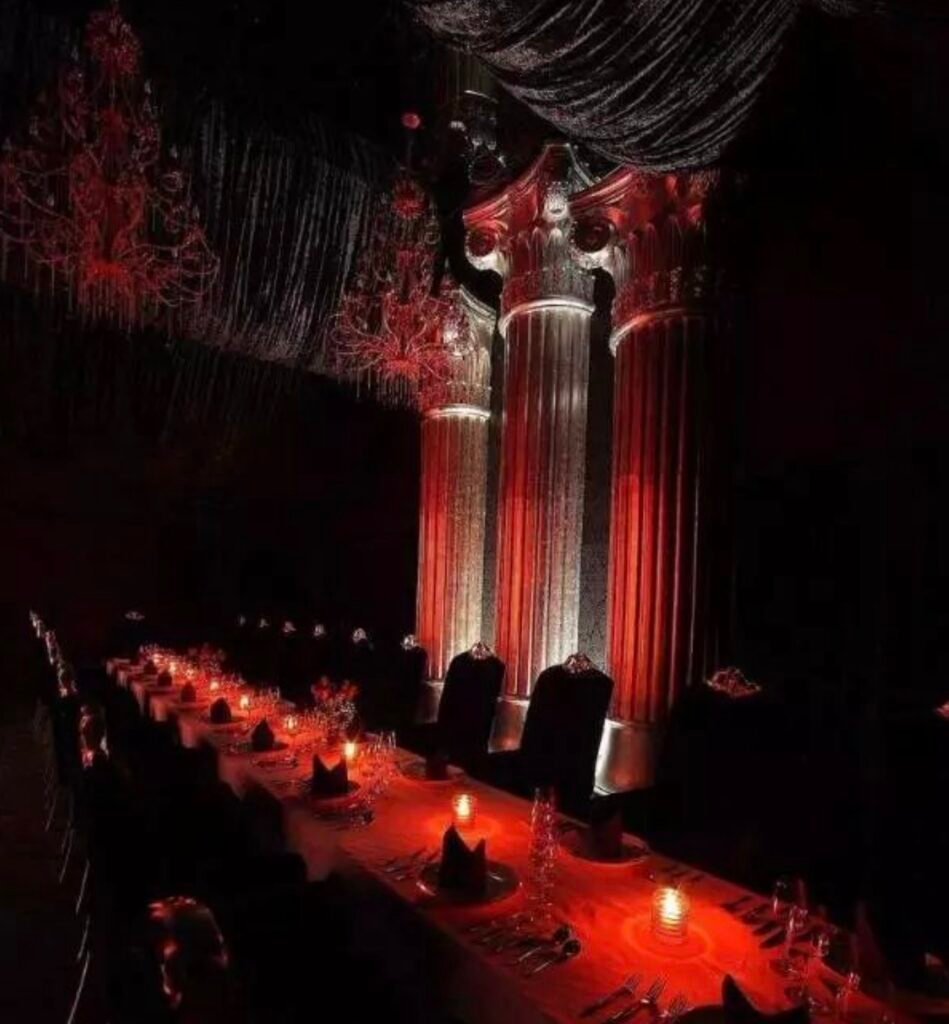
This area’s lighting design essentially hopes diners can ignore the lighting, ignore the environment, and eat and chat quietly.
Private room
The private room is more private and high-end than the public area, so the lighting design needs to highlight the atmosphere and style of this area.
- Western-style cold meal private room mode:
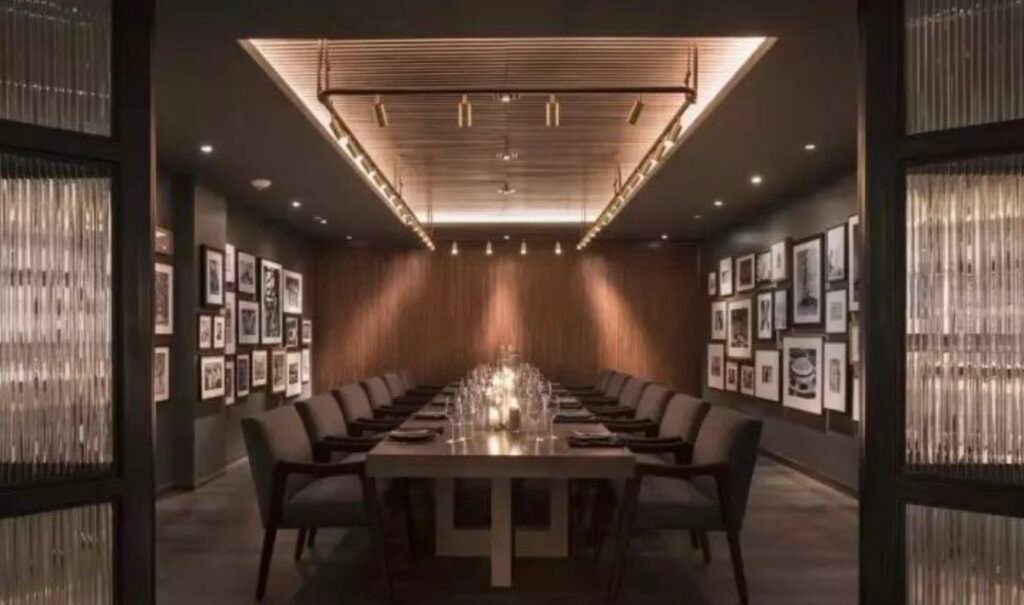
- Chinese private room lighting mode:
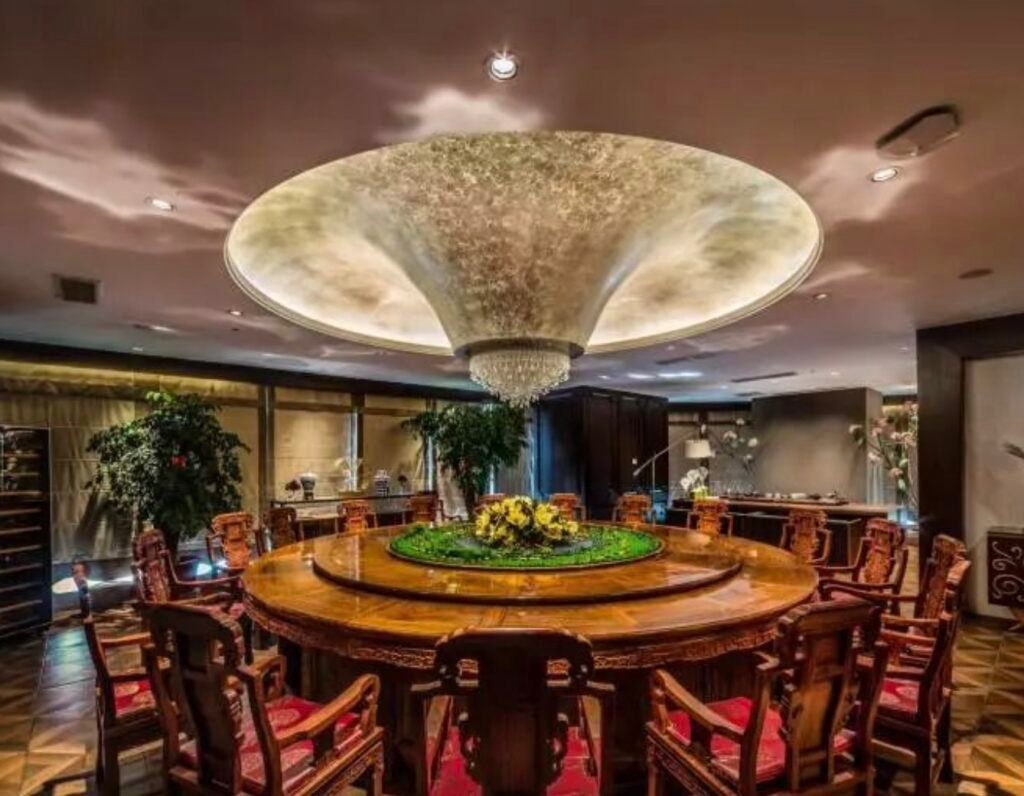
- Japanese private room lighting mode:
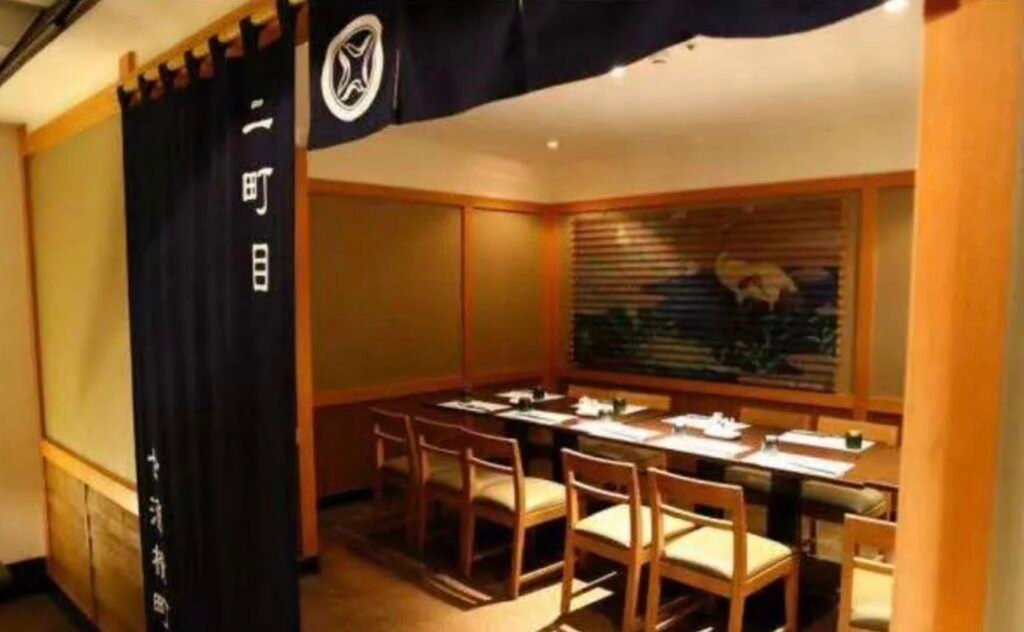
Conclusion
The lighting design methods of each area of the dining space are different, but the ultimate purpose is to attract diners. A successful restaurant will involuntarily leave such a mark in the customer’s mind: see it → walk in → sit down → can share → will come again.
So if you see the value of lighting design, and feel that you need to impress customers with lighting value, you can win deals with professionalism, and pay attention to EYBO lighting! If you want to purchase LED lighting fixtures, contact EYBO business.
As a well-known “customized lighting” expert, EYBO Lighting is committed to providing customization of professional lighting fixtures for the lighting industry, escorting the design of the indoor light environment, and helping a healthy living environment!


